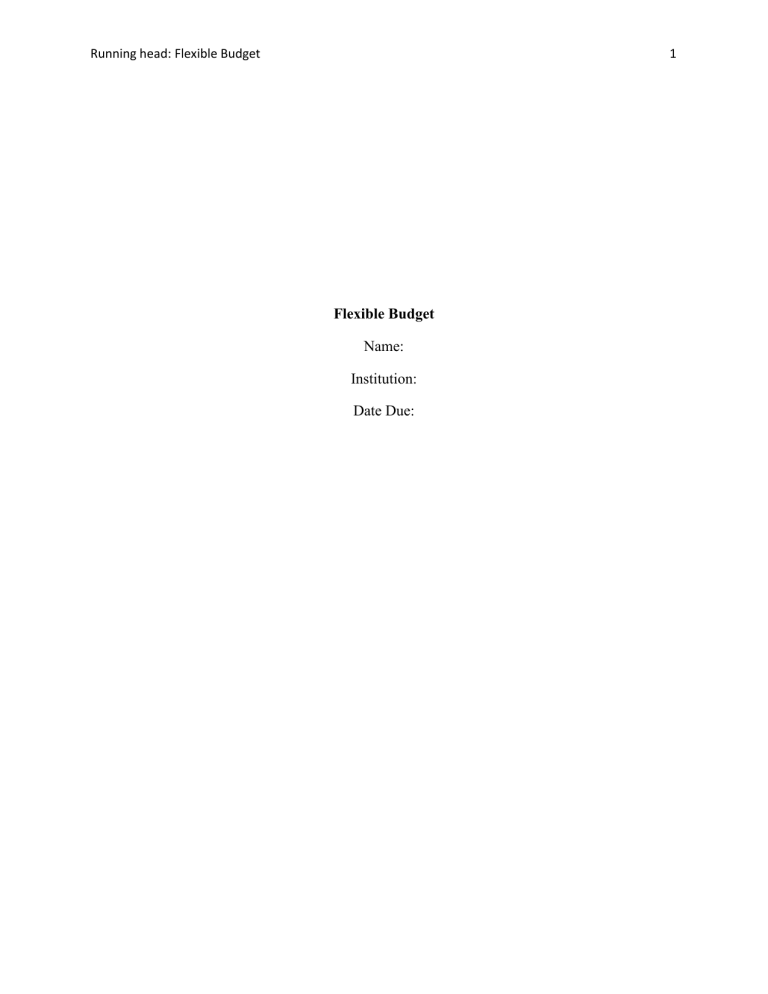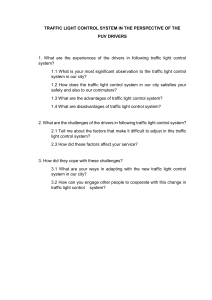The difference Between a flexible budget
advertisement

Running head: Flexible Budget 1 Flexible Budget Name: Institution: Date Due: Flexible Budget 2 Difference between Flexible Budget Based on Two Cost Drivers and a Flexible Budget Based on a Single Cost Driver In their definition of flexible budget, Hansen, Mowen and Guan (2009) maintain that an activity based flexible budget is founded mainly on the budgeted costs for every activity and its interrelated cost driver. That is, Activity based flexible budgets are founded on multiple costs drivers that are decided on based on how effective they are in explaining the costs behaviors in flexible budgets. The costs also tend to diverge in relation to the apposite cost driver in an activity founded flexible budget. Hansen, Mowen and Guan (2009) further observe that for every activity, costs are dependent on various cost drivers and that the costs are classified as either fixed or variable One of the notable differences between a flexible budget based on two cost drivers and a flexible budget that is based on a single cost driver is found in the cost formulas. This implies that, in the existence of two cost drivers, given costs may tend to be a function of the initial cost driver while others may also tend to be the function of the second cost drivers, and also, other costs may also be a function of both cost drivers. Alternatively, Mowen (2012) opines that while conventional budgets are characteristically founded on a single cost driver, for example, machine hours and direct labor hours, flexible budgets that are based on activities are based on two or numerous cost drivers. He further observes that the single In differentiating the flexible budget that is based on a single cost driver and a flexible budget based on two cost drivers, Hansen, Mowen and Guan (2009) note that in a functionally founded approach, budgeted costs for a specified level of activity can be attained through the assumption that a single unit based cost driver, for instance product units or direct labor hours, drives all the costs. This implies that a given cost formula is developed for every cost item as a function of the total amount of the units produced or direct labor hours. On the other hand, Flexible Budget 3 flexible budgets that are based on two cost drivers require the creation of more than one flexible budget formulas. This includes the use of formulas such as cost estimation procedures that comprise least square methods and high-low methods. Mowen (2009) also notes that one of the key differences between a flexible budget based on two cost drivers and a flexible budget based on a single cost driver can be derived from the advantages and disadvantages. That is, while single cost driver based flexible budget has been viewed as confusing and not reliable with regards to decision making, two costs drivers based flexible budget tend to be advantageous to managers in that it enables them to accurately forecast the desired costs for various levels of activities. The costs can also be compared to with the actual costs with the objective of appraising the budgetary performance. Flexible Budget 4 References Hansen, D. R., Mowen, M. M., & Guan, L. (2009). Cost Management: Accounting and Control: Accounting and Control. Stamford, CT: Cengage Learning. Mowen, M. M. (2012). Cornerstones of Managerial Accounting. Stamford, Copnnecticut: Cengage Learning.


